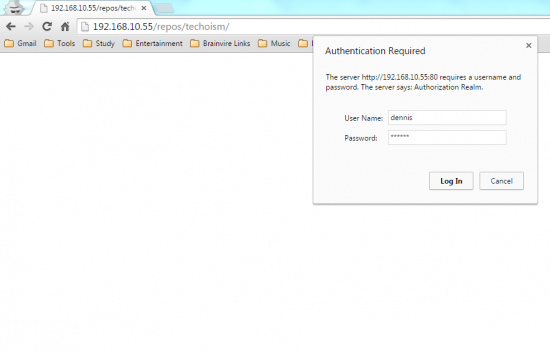How to configure SVN Server(Subversion )on CentOS/RHEL 5/6/7
Subversion is a version and revision control framework utilized by engineers to track and keep up prior version of their source codes. Subversion oversees file and directory, and the changes made to them, over time.This allow you to recover more established adaptations of your information, or analyze the historical backdrop of how your information changed.
In this article we can see how to configure Subversion Server on CentOS/RHEL.
Step 1: Install Apache Webserver
Before installing SVN packages, you must install Apache( Webserver ).Type the below command to install Apache along with dependencies.
# yum install httpd
In the wake of introducing Apache, begin Apache administration utilizing after charge and empower auto begin on framework reboot.
For CentOS/RHEL 5/6 # chkconfig httpd on # service httpd start For CentOS/RHEL 7 # systemctl enable httpd # systemctl start httpd
Step 2: Disable Iptables and Selinux
If you not able to see the apache test page, disable the iptables and selinux service on your server. Use following steps to disable the service.
For CentOS/RHEL 5/6 # service iptables stop # chkconfig iptables off For CentOS/RHEL 7 # systemctl stop firewalld # systemctl disable firewalld
Now disabled the selinux of server. After disable the selinux reboot the server.
# vim /etc/sysconfig/selinux
SELINUX=enforcing and replace with SELINUX=disabled
Step 3: Install SVN Server
Once the Apache Web Server is installed, we’ll need to execute the following command to install subversion.
# yum install subversion mod_dav_svn
Check SVN Server Version
After installing the SVN Server check the version of SVN using following command.
# svn --version
svn, version 1.6.11 (r934486) compiled Feb 10 2015, 22:08:22 Copyright (C) 2000-2009 CollabNet. Subversion is open source software, see http://subversion.tigris.org/ This product includes software developed by CollabNet (http://www.Collab.Net/). The following repository access (RA) modules are available: * ra_neon : Module for accessing a repository via WebDAV protocol using Neon. - handles 'http' scheme - handles 'https' scheme * ra_svn : Module for accessing a repository using the svn network protocol. - with Cyrus SASL authentication - handles 'svn' scheme * ra_local : Module for accessing a repository on local disk. - handles 'file' scheme
Step 4: Create Directory
Now create directory on server for SVN repositories.
# mkdir /var/www/svn/repos
Step 5: Configure SVN Server
After installing Apache Webserver we open or create the SVN configuration file and add the below lines in the file.
# vim /etc/httpd/conf.d/subversion.conf
<location /repos> DAV svn # SVN path SVNParentPath /var/www/svn/repos AuthType Basic AuthName "Authorization Realm" #password file path AuthUserFile /var/www/svn/users Require valid-user </location>
Step 6: Create SVN Repository
Create a new repository and change the ownership of repository using following command:
# cd /var/www/svn/repos # svnadmin create techoism # chown -R apache.apache techoism
Step 7: Create New User
After creating a new repository we create a new user using following command.
# htpasswd -c /var/www/svn/users dennis
Note: If we have to add more using in the list then we use “-m” switch in place of “-c”
# htpasswd -m /var/www/svn/users steve
After creating user we will restart Apache Service.
For CentOS/RHEL 5/6 # chkconfig httpd on # service httpd start For CentOS/RHEL 7 # systemctl enable httpd # systemctl start httpd
Now you should be start the svnserve process by using this script:
For CentOS/RHEL 5/6 # service svnserve start For CentOS/RHEL 7 # systemctl start svnserve
Next, to set this script to run ‘start’ on server boot register the service:
For CentOS/RHEL 5/6 # chkconfig --add svnserve # chkconfig svnserve on For CentOS/RHEL 7 # systemctl enable svnserve
Step 8: Access Your Repository in Browser
Now open your svn repository in a browser. It will prompt for authentication.
# http://192.168.10.55/repos/techoism or # http://svn.techoism.com/repos/techoism
Reference Articles:
How to Configure SVN Server with LDAP Authentication on CentOS/RHEL
How to Configure SVN Server on CentOS/RHEL




so the selinux doesn’t get restarted/re-enabled?